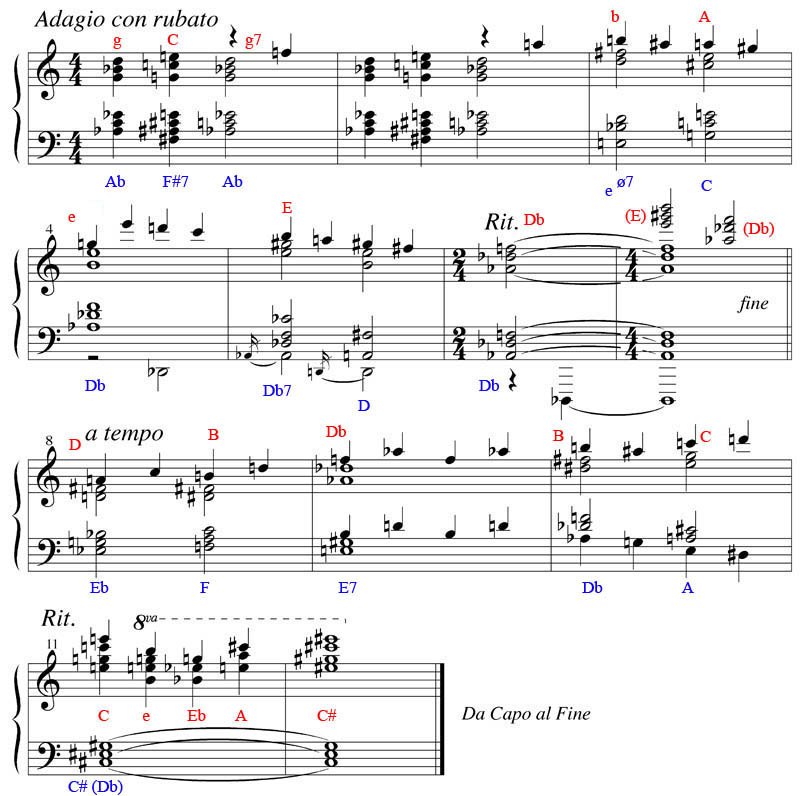Developing a Non-tonal Triadic Vocabulary. When juxtaposing two or more chordal structures from different keys, two fundamental issues come in to play: the degree of harmonic congruence between the triads and the manner in which the progression will take shape. To explore these topics, we have composed a brief, simple, and stately ternary piece for piano that will exhibit primarily contrasting tonal triads between the treble and bass throughout. The spelling of chords is largely dependent on how easily they can be read simultaneously rather than chronologically within each hand. As well, our analysis will not be concerned with inversion, only root and quality.
In the first bar, the treble contains a diatonic-root progression g-C-g(7). However, because the g is minor and the C is major, the idea that the progression is from either key is suppressed. In the bass, a step progression of a major second is constructed Ab-F#(Gb)-Ab. Regarding the overall harmonic tension, we observe the greatest degree of friction in the first juxtaposition since each note in the bass is contrasted by a semitone in the treble. The second sonority is built upon the disposition of a tritone, with the common E between the two chords.
In bar three, the first sonority exudes significantly less tension with the quasi-whole-tone construction of D-E-F#-(G#)-Bb. The second sonority is the first in the composition to feature a contrast based on a third A-C. The particular quality that results stems from the conflict between the A major quality (through the use of the C#) and its minor counterpart (C) in the lower triad. This third relation is explored throughout the piece (note the many Db-E based triads that are juxtaposed). By the end of the first section, the two hands converge on the same tonality.
The second part begins very much like the first with each hand displaced by a semitone followed by a tritone. It is interesting to compare the last sonority of bar 10 with the second of bar 3. Here the A-C (third relation) juxtaposition is employed once again, but this time reversing hands. Bar 11-12 is unique in that it pits one triad in the bass against a sequence of different triads (with different degrees of tension) in the treble.
On a final note, examine the treble part in bars 8-10. This can be construed as a type of planing, in which the progression is built upon a succession of triads with identical qualities.
mp3 download



